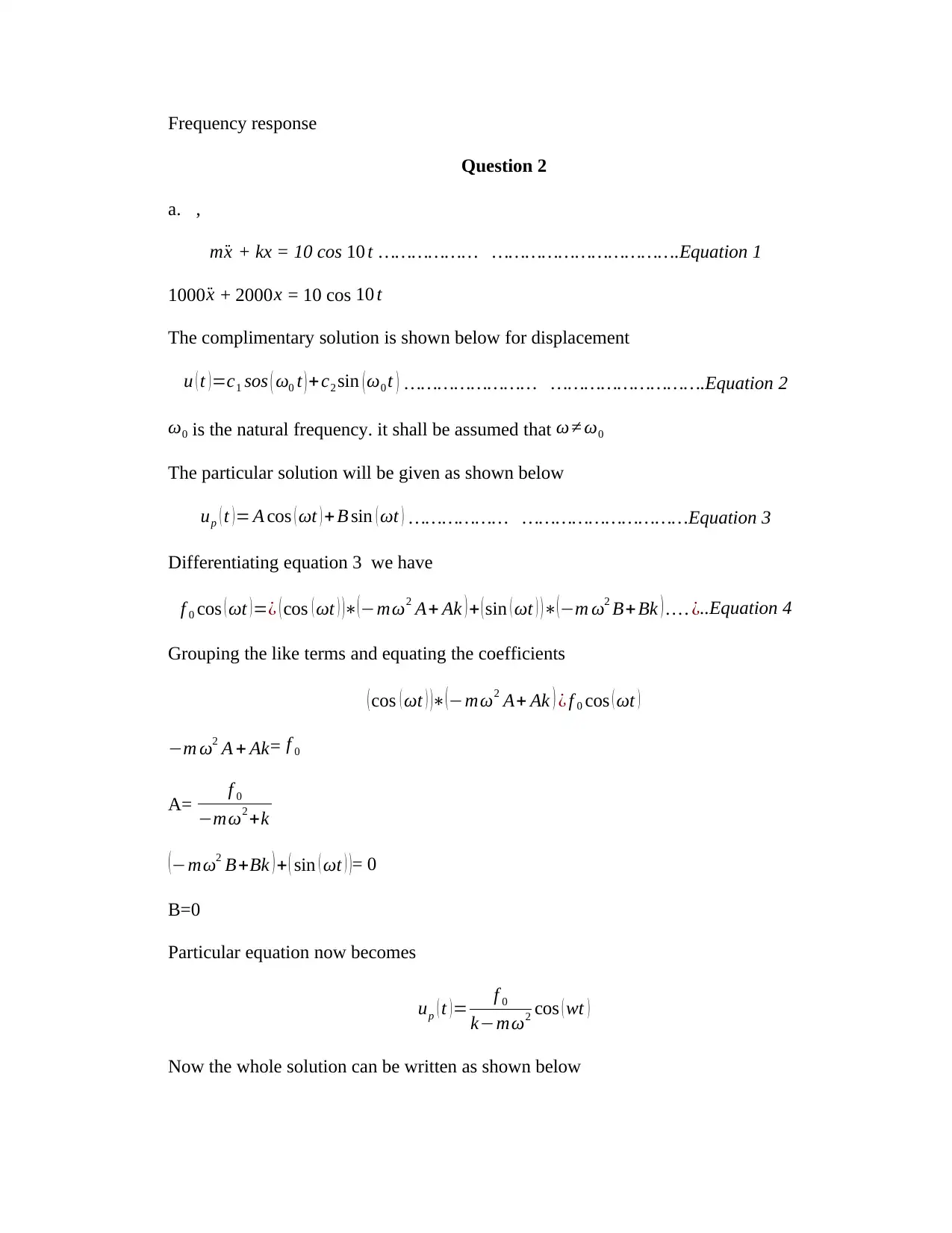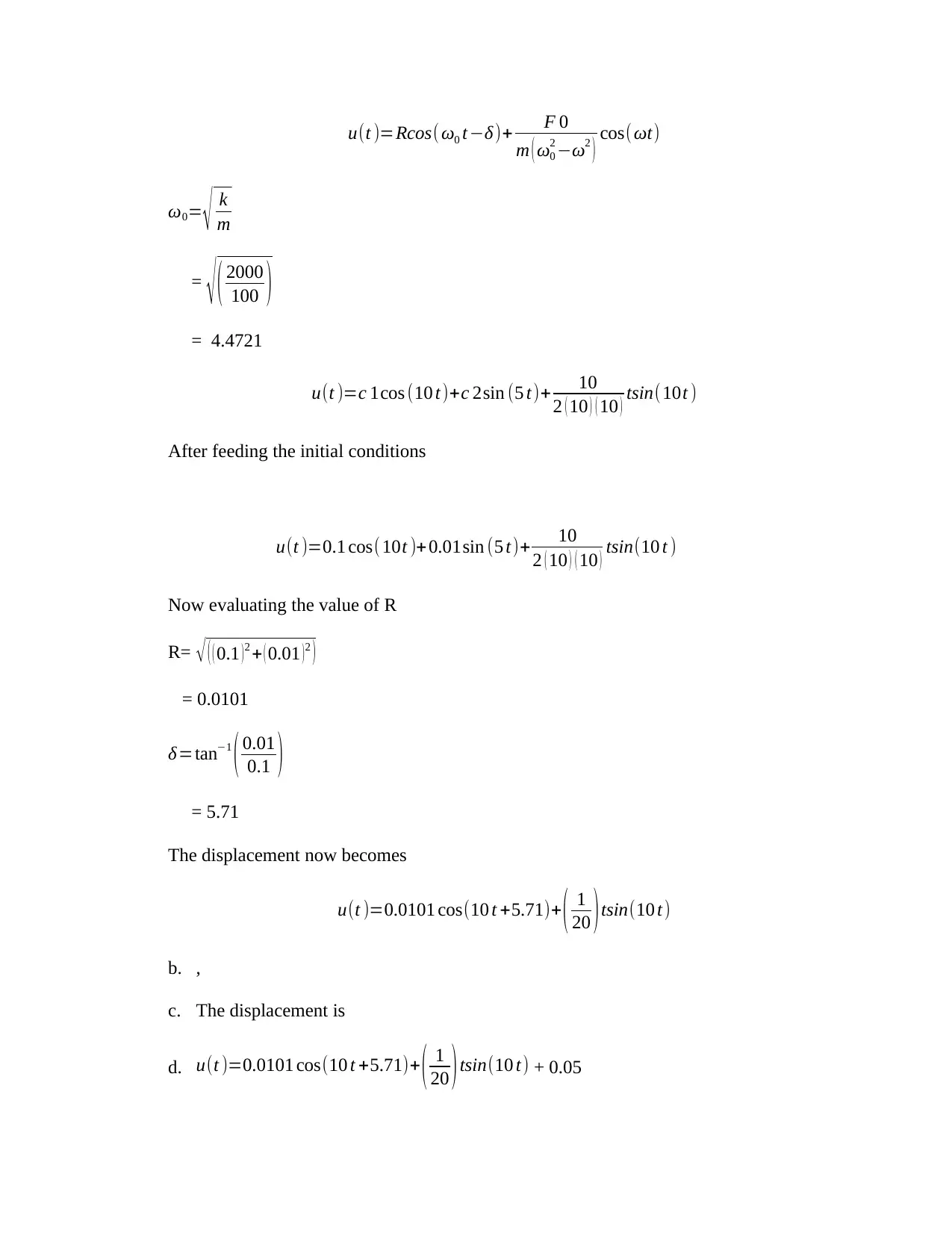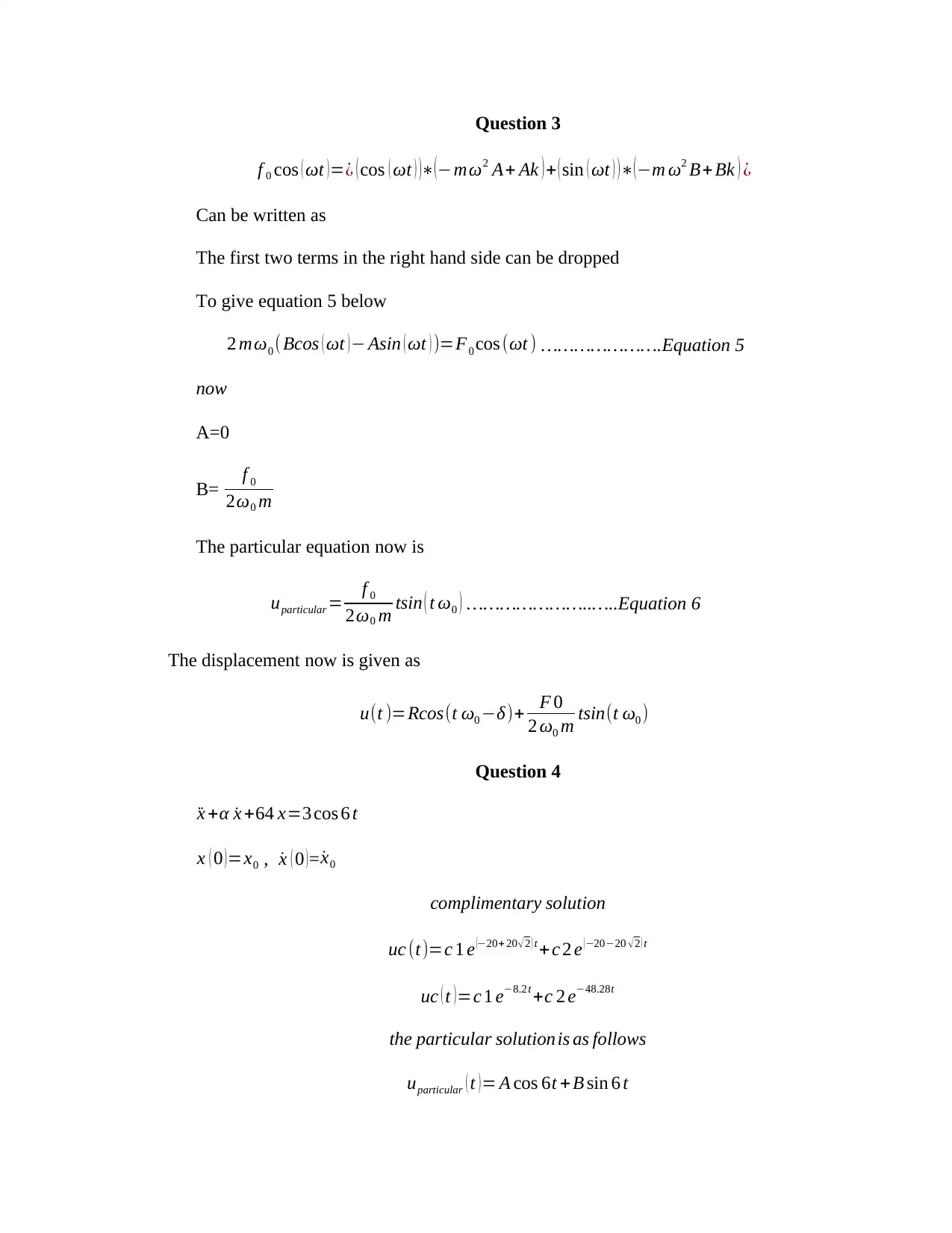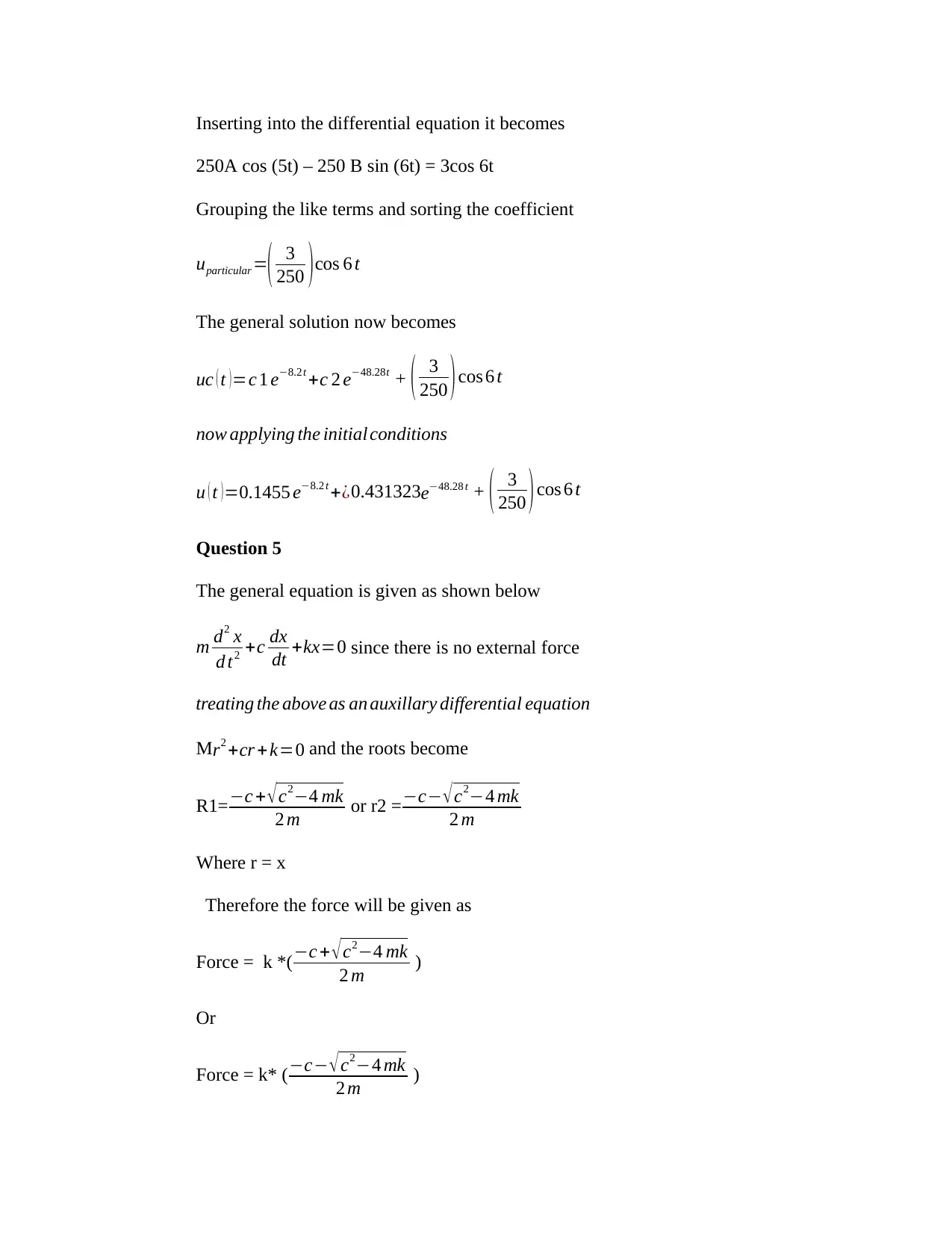Frequency Response
VerifiedAdded on 2022/12/14
|5
|809
|476
AI Summary
This document explains the concept of frequency response and its application in solving differential equations. It covers the complimentary and particular solutions and provides a step-by-step guide on applying initial conditions. Suitable for students studying engineering or physics.
Contribute Materials
Your contribution can guide someone’s learning journey. Share your
documents today.
1 out of 5










![[object Object]](/_next/static/media/star-bottom.7253800d.svg)